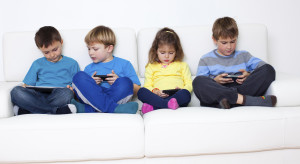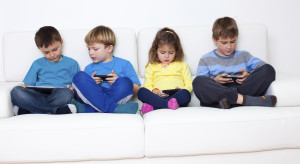 Elena Casado Adán. Community Manager and Editor, Telefónica S.A.
Elena Casado Adán. Community Manager and Editor, Telefónica S.A.
What changes have occurred in the use of the internet by children in the last 4 years? Has cyberbullying increased among the very young?
These questions, and many more, have been dealt with in the comparative study “Children’s online risks and opportunities”, which presents the most significant findings from the publications EU Kids Online from 2010 and Net Children Go Mobile from 2014. The study, carried out in 7 European countries, -Belgium, Denmark, Italy, Ireland, Portugal, Romania, and the United Kingdom- on children of between 9 and 16 years of age, shows that the risks when using the internet have not significantly increased over the 4 years. In addition, it is worth pointing out that the majority of the danger comes from content that the users themselves upload, increasing the proportion who report having suffered cyberbullying from 13% to 17%. This growth is focused, above all, on children and teenagers.
The data which has been extracted over the last 4 years suggests that children are subjected to practically the same risks and opportunities, except in Belgium, Portugal, and the United Kingdom, where there is a more positive vision of the Internet.
Another of the more relevant conclusions is that there is a high percentage of young people who have private access to the internet, with their houses being the favourite place to browse. The majority connect at school, although there are big differences in this aspect with respect to the country. For example, internet use is greater in Denmark and the United Kingdom, while it is very low in Italy.
It has also been shown that, although the majority enjoy using the internet, a good part does not see it as a learning opportunity. The online activities they like the most, and which have also increased with respect to 2010, are watching videos and connecting to Social Networks, and above all Facebook. Instant messaging continues to be popular, together with playing online, posting photos or videos, and downloading content. It is significant that reading the news on the internet has multiplied by a factor of five, which suggests an increase in the use of the internet for civic matters.
The trend towards showing their private lives on the internet has fallen among the youngest, who have stopped seeing it as an opportunity to reveal their most personal intimacies and thoughts.
Opportunities
The use of smartphones and tablets will enable many children to become advisers when helping others to resolve technological problems. This is a new role that they will fill as they leave their comfort zone when become older. Why? Because for them to take to the limit the possibilities that the online world offers is fun, and they will want to test their abilities to browse and overcome any problems they find on the way.
In addition, it is worth pointing out that the youngest children not only share electronic devices, but they also exchange photos, apps and music. Share information over a collaborative space and form part of an online community is an example of positive engagement generated by the Internet among the young.
Risks
In the last few years there has been a boom in children’s access to the internet, thanks to smartphones and tablets. This has allowed the youngest to browse more easily and with more freedom, accessing all the opportunities which it offers, along with the risks.
One of the most worrying conclusions coming out of the study is that the creation of negative content and cyberbullying is growing, with girls and the youngest being the hardest hit in this aspect. At the same time, a slight increase in the exposure to sexual content –online and offline- has been seen, especially for girls, and a moderate increase in excessive internet use. In that respect, Digital Family, the Telefónica digital educational resources platform for parents and teachers, is coordinating a series of physical workshops so that the very young learn to create a digital ecosystem, respecting the rules and bringing them closer to connected devices in an intelligent manner.
Parental Mediation
Active mediation by parents to achieve a safe internet is not equal across Europe. Parents in the United Kingdom and Ireland do more in order to obtain a safe internet, than those in Belgium, Denmark and Italy. It is worth pointing out that these prefer to talk about internet safety rather than use parental control systems, but their involvement in tackling the issue has not grown despite their worries.
The online possibilities which will be presented to future generations are linked to the mobile digital world, which is promising even more technological changes and more accessible products. It will be essential in the future that the internet has evolved into a safer form, and families have a greater number of tools to guarantee the safety of their children.











